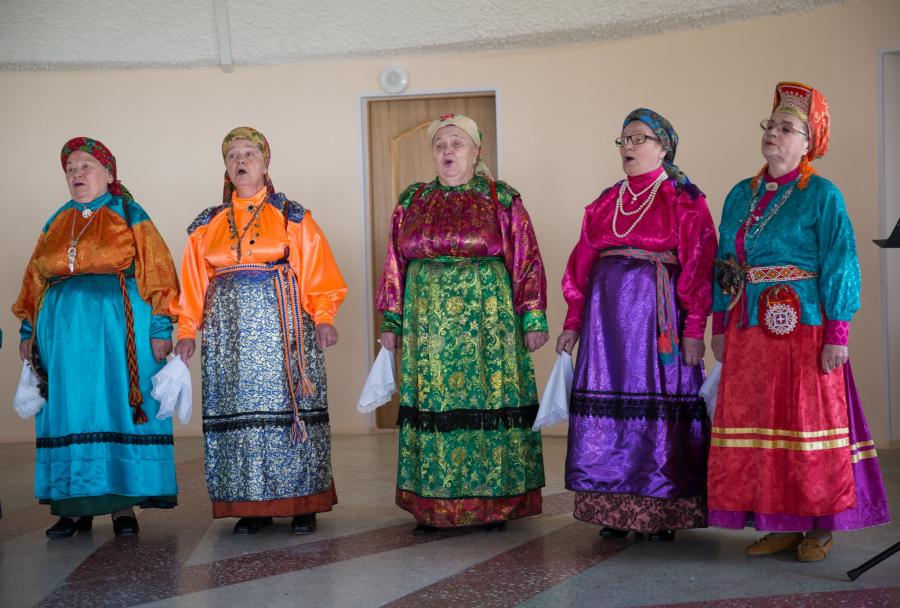Indigenous leaders of the island of Sakhalin in the far east of Russia have joined forces as a new wave of oil and gas development on the island is encroaching on their traditional lands.
On March 25-26, representatives of the Nivkh, Orok, Evenk, and Nanai peoples of Sakhalin held a congress in the town of Yuzhno-Sakhalinsk. Roughly 3,000 indigenous people make up about 0.5 percent of the island’s total population.
Despite their small numbers, the Sakhalin aborigines are standing up to multinational energy companies that are developing oil and gas deposits on the island.
"The congress was very successful," said Pavel Sulyandzyga, vice-president of the Russian Association of Indigenous Peoples of the North (RAIPON), an organization representing some 30 indigenous peoples in Russia. "Its main achievement is that it brought all of the local indigenous leaders together. Only by joint efforts can we effectively defend our interests."
The indigenous congress created a council which will represent the island’s indigenous population in negotiations with the oil companies and Russian government authorities. The council will advocate for an ethnographic study to assess the cultural impact of the oil and gas projects on indigenous peoples. This independent study would also evaluate the appropriate financial compensation that should be given to indigenous peoples for any damage resulting from the projects.
Sakhalin’s indigenous leaders also pressed for companies engaged in developing the island’s natural resources to contribute to an Indigenous Development Fund that would serve to improve the economic and social conditions of the four indigenous groups on the island. Some oil company representatives were present at the congress.
Large-scale integrated oil and gas production started on Sakhalin in mid-1990s when the Russian government signed agreements with a host of energy giants such as Exxon, Shell, British Petroleum, and Russia’s Rosneft. Now, the second stage of development is due to take place with the construction of additional oilrigs, pipelines, processing plants, and transportation terminals.
Sakhalin Energy, in which Shell is a majority shareholder, has committed to bring its investment up to $10 billion on the island over the next five years in order to extend the currently seasonal oil and gas production year-round, according to the Sakhalin Energy website.
Sakhalin aborigines claim that the oil and gas projects are threatening their traditional lifestyle through deforestation, pollution, and by endangering the species that are central to their livelihoods. Many indigenous islanders still sustain themselves through reindeer herding and salt- and fresh-water fishing.
Some harmful impacts of oil and gas projects have already been recorded. These include the massive herring die-off near Shell’s offshore drilling platforms and a sharp decrease of saffron cod in northeastern Sakhalin due to the waste dumped into the waters, according to Pacific Environment, a California-based non-governmental organization involved in community advocacy efforts on the island.
More damage is anticipated. The new Shell pipeline is being constructed over a sacred Nivkh burial ground. The noise from the construction has impacted the caribou population and driven herders away from their traditional grazing grounds, reports Pacific Environment. In addition, the new pipeline will be crossing salmon spawning streams.
The new Shell drilling platform and the pipeline connecting it to the shore is due to be constructed near the key feeding area of the endangered western pacific gray whale.
Shell recently announced its intention to move the pipeline some 20 kilometers south, away from the feeding grounds. However, Friends of the Earth, a London-based environmental NGO, says the move will do little to salvage the gray whale population unless the platform is moved as well.
Earlier this year, a handful of indigenous and environmental activists mounted protests by blocking the roads to a number of oil production facilities. The indigenous congress in Yuzhno-Sakhalinsk demonstrated a further resolve of the indigenous population to stand up for its rights.
"I am hopeful that we will reach an agreement with the oil companies. There are many obstacles," Sulyandzyga said. "The companies may be disappointed by the congress’s choice of the council members—they might have hoped for individuals more loyal to them. However, as they saw during the congress, our choice is legitimate and we are confident that the indigenous interests will be properly represented."
Nevertheless, the indigenous community is determined to resume protests should the negotiations fail to show satisfactory progress by June 1, according to the communiqué released by RAIPON in summary of the congress.
"We hope that the unity and momentum created by the congress will continue to serve indigenous interests even beyond the current issue of oil development," said Sulyandzyga.
Oil company representatives were contacted several times but were unavailable for comment.



